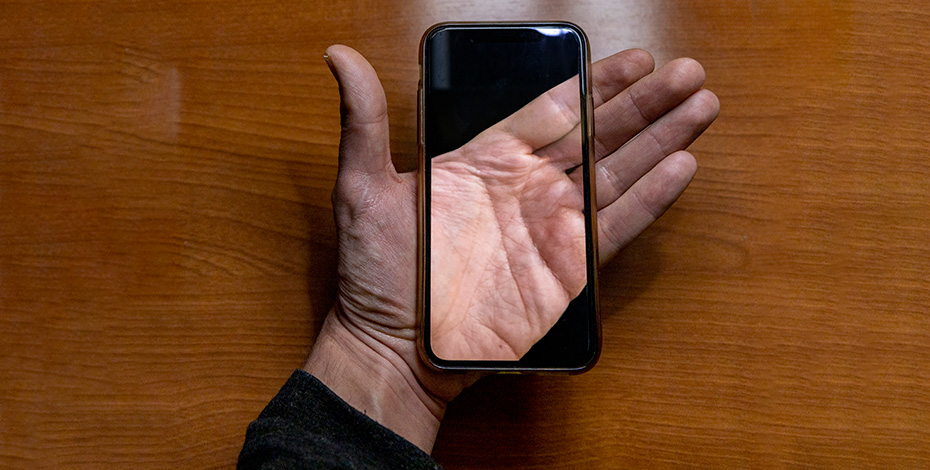
The latest research in hand

JOURNAL OF PHYSIOTHERAPY As always, quality papers are readily available. A couple of authors published in the latest issue answer questions about their research.
Mobile apps supporting exercise for musculoskeletal pain
A group of physiotherapists in Melbourne collaborated on a systematic review examining whether therapeutic exercise programs or physical activity programs for people with musculoskeletal pain can be made more effective by administering them with a supporting mobile phone app.
The first author, Debra Thompson, answers some questions.
Why did you choose to look at therapeutic exercise and physical activity for musculoskeletal pain?
Musculoskeletal pain conditions are common and can have a big impact on people’s health, wellbeing and social and economic participation.
Therapeutic exercise and tailored physical activity programs are high-value, low-cost interventions for improving symptoms and functional outcomes in people with musculoskeletal pain conditions.
Long-term adherence to these programs is challenging and behaviour change plays a big role.
Working out how digital technologies can improve outcomes, for example through behaviour changes such as adherence to prescribed programs, is an important topic for physiotherapy researchers.
What was your rationale for looking at whether a mobile phone app could boost the benefits obtained from such programs?
Previous systematic reviews have demonstrated that using digital health interventions more generally to support exercise for musculoskeletal pain conditions is beneficial.
However, since mobile apps have some unique advantages (such as being portable, accessible and relatively low cost), we hypothesised that they may have additional or greater benefits.
Using behaviour change-focused strategies to facilitate better outcomes is increasingly being explored in research.
Mobile apps have the potential to deliver these in novel ways.
As the popularity of smartphones and mobile apps grows, understanding whether they work to support exercise and physical activity programs is important.
Your review had a very comprehensive search strategy. How much evidence did you find with your searches?
We searched a large number of databases and also developed a search strategy that was highly sensitive, hoping to find everything out there that could help answer our research question.
Our search found 11 eligible studies, with a total of 845 participants.
What benefits did you find from including a mobile phone app with the exercise intervention?
We pooled data on pain intensity from nine studies and self-reported physical function from five studies.
We found that adding a mobile app to exercise interventions reduced pain intensity and improved self-reported physical function for people with musculoskeletal pain conditions.
This confirms that mobile apps do help our patients to benefit from their exercise programs.
A single study found that return to work was faster for people who used a mobile app-delivered exercise program.
The other outcomes (pain interference, physical performance, adherence, psychosocial aspects and health-related quality of life) did not show a clear difference between groups, although for some outcomes very limited research was available.
Were these benefits large enough to be considered worthwhile by smartphone users?
The benefits in pain intensity and self-reported physical function seem to be worthwhile for smartphone users, partly because even small benefits may be considered worthwhile when the intervention is safe and low cost.
For those who don’t already own a smartphone or don’t have sufficient digital literacy to use mobile apps, purchase costs and training needs would also need to be considered when judging worth.
Were there some particular types of musculoskeletal pain conditions that responded better to the app?
When we looked at studies just on people with knee osteoarthritis, there were greater benefits in pain intensity and self-reported physical function with mobile app-delivered exercise than in studies on other conditions.
What do you think research in this field should address next?
Our understanding of the effectiveness of mobile apps in delivering exercise programs for musculoskeletal pain conditions would be strengthened by well-designed research studies that include a wider range of age groups and clinical conditions.
Including additional outcomes that reflect the biopsychosocial nature of musculoskeletal pain conditions is also important.
Better reporting of adherence to exercise and physical activity would give us a clearer understanding of how mobile apps work to improve outcomes.
Our review did not look at the content or quality of the mobile apps and looking at this more closely would complement our research.
Research currently in progress within the Centre for Health, Exercise and Sports Medicine at the University of Melbourne is looking at this.
Designing mobile apps to effectively implement behaviour change techniques targeting behaviours such as exercise program adherence will help make the most of their potential.
Innovations harnessing available technologies have the potential to make mobile apps an essential part of a physiotherapist’s toolkit for managing musculoskeletal pain conditions.
>> Debra Thompson APAM is a physiotherapist studying her Master of Rehabilitation Science (now called Master of Clinical Rehabilitation) at the University of Melbourne. This systematic review was conducted with two other physiotherapists who are completing their master’s online at the University of Melbourne.
© Copyright 2024 by Australian Physiotherapy Association. All rights reserved.





